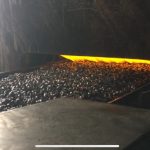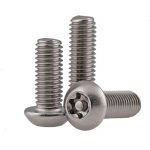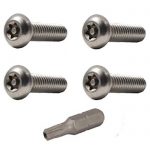Materials
| Mild Steel | Mild steel/Low-carbon steel, sometimes called carbon steel or ordinary carbon steel, is defined as a carbon content of no more than 2% and no other obvious alloying elements. With the characteristics of high strength and low price, it can be manufactured into various shapes and accessories. |
| Multiple Grades of High Tensile Steel | High-strength steel often has special uses, mainly used in machinery and construction industries, and its high-strength characteristics are often formed after all heat treatment and surface treatment are completed. Ranging from Grade 8.8 to Grade 14.9 (45H). |
| Stainless Steel | Corrosion resistance, better surface finish, can be used in a range of fasteners. Grades 304 (A2 Stainless) and 316 (A4 Stainless) are the most popular. |
| Brass | Brass is an alloy of copper and zinc, or more the generic name for a range of differing copper-zinc alloys – such as nickel-silvers which are silver-coloured copper, nickel and zinc alloys – which can be considered a ‘special brass’. |
| Nylon | Lightweight and corrosion-resistant, it is one of the most popular plastic for use in fastening and especially suited for electronic work. |
| Titanium | High hardness and strength, lightweight and corrosion resistance. Also, being solderable, good biocompatibility (medical equipment), and strong surface deformability |
| Tungsten | High density and mechanical strength are huge benefits in many industries,including the aerospace industry, heat treating, oil and gas, and even the medical industry. for instance, it would often be used in the balancing of rotating parts such as propellers. |
| Aluminium | Lightweight, easy to process, good electrical and thermal conductivity, corrosion resistance, also not magnetic compared with steel. |
| Polyoxymethylene/POM | Otherwise known as Acetal or Delrin, Polyoxymethylene is a thermoplastic used in high-performance parts that require high durability and stability and low friction. |
| Acrylic | Poly (methyl methacrylate) (PMMA), also known as acrylic, acrylic glass, perspex, or plexiglass, as well as by the trade names and brands Crylux, Plexiglas, Acrylite, Astariglas, Lucite, Perclax, and Perspex, among several others, is a transparent thermoplastic often used in sheet form as a lightweight or shatter-resistant alternative to glass. It can also be used as a casting resin, in inks and coatings, and for many other purposes. |
Finishes/Surface Treatment
| Chemical Black | Chemical Black/Black oxide coating is used for steel parts (not stainless steel). The black coating is formed by the reaction of the surface of the material with the salts in the black oxide solution. |
| Passivation (for stainless steel items) | Passivation is a widely used metal finishing process for stainless steel. In the passivation chemical treatment, a protective oxide layer is formed to enhance corrosion resistance. |
| Chrome | Chrome plating forms a coating by electroplating, which is decorative and provides corrosion resistance. At present, we only provide hexavalent chromium plating that complies with RoHS. |
| Galvanizing | Galvanizing is the most common surface treatment process for steel fasteners, forming a layer of rust-proof oxidation protection. |
| Nickel | Like chrome plating, nickel plating adds a thin layer of nickel to the surface of the fasteners. |
| De-embrittled | As we all know, hydrogen will be produced during heat treatment, and too much residual hydrogen will make the metal more brittle. Embrittlement is to use a further baking process to reduce any hydrogen that may remain, and it is easy to enhance the toughness of high-strength metals. |
| Paint coating | Paint is the most commonly used material to protect steel. this process would custom the surface color and prevent corrosion, however, the painting layer would be thick than Galvanizing, Chemical Black, and etc. |










